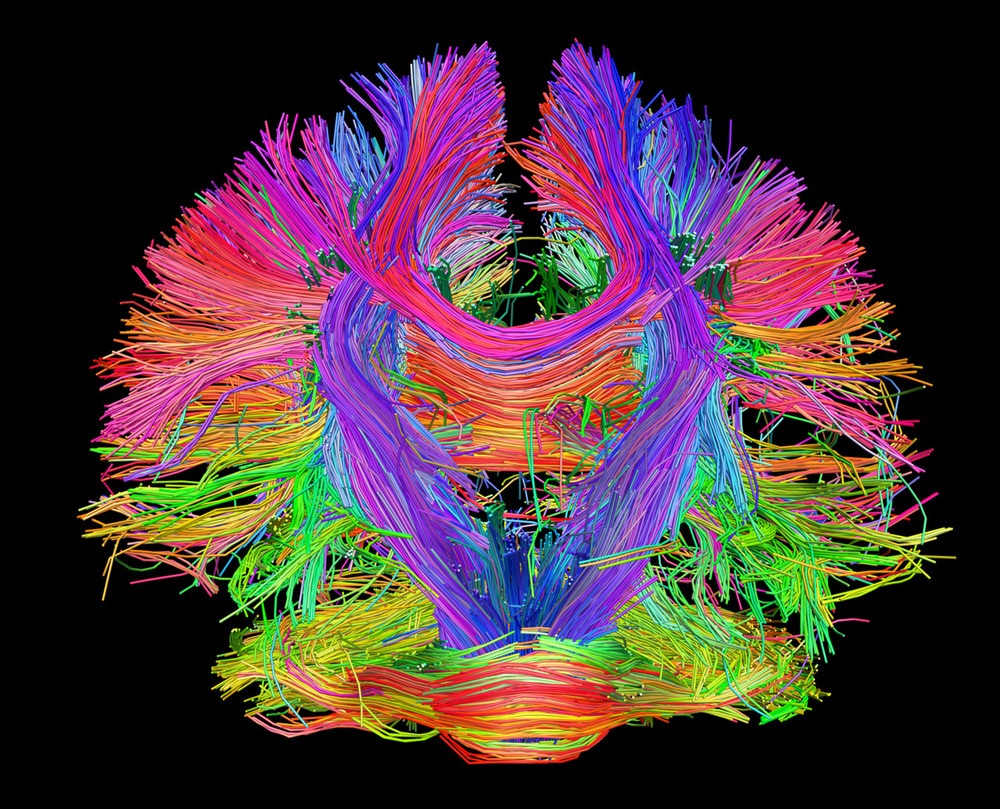Concrete Autoencoder documentation!#
Sub-sampling on multi-dimensional diffusion MRI with rotation equivariance.

The human connectome. Credit: Human Connectome Project#
Getting started#
Installing the project#
python -m pip install -e .
This installs all dependencies to run the project. Install the development dependencies with:
python -m pip install -e .[dev]
Running the project#
PyTorch Lightning CLI is used to generate a command line interface which you can use to run the project. This CLI is automatically generated based on the parameters required by each model and dataset. The values for the parameters can be provided via config files or command line arguments. Several config files are provided in the configs folder:
trainer.yaml: this config file contains basic trainer parameters, like which GPU to use. This config file should be included in every training session.
mudi_data.yaml: contains the configuration for the MUDI dataset. Used if you want to train with the MUDI dataset.
mudi_concrete_autoencder.yaml: config for the Concrete autoencoder with MUDI specific parameters.
mudi_fcn_decoder.yaml: config for the Fully Connected Decoder with MUDI specific parameters.
mudi_spherical_decoder.yaml: config for the Spherical Decoder with MUDI specific parameters.
hcp_data.yaml: contains the configuration for the HCP dataset. Used if you want to train with the HCP dataset.
hcp_concrete_autoencder.yaml: config for the Concrete autoencoder with HCP specific parameters.
hcp_fcn_decoder.yaml: config for the Fully Connected Decoder with HCP specific parameters.
hcp_spherical_decoder.yaml: config for the Spherical Decoder with HCP specific parameters.
Multiple configs can be chained:
python -m autoencoder \
--config ./configs/trainer.yaml \
--config ./configs/hcp_data.yaml \
--config ./configs/hcp_fcn_decoder.yaml
Indices and tables#
Bibliography#
- 1
Abubakar Abid, Muhammad Fatih Balin, and James Y. Zou. Concrete autoencoders for differentiable feature selection and reconstruction. CoRR, 2019. URL: http://arxiv.org/abs/1901.09346, arXiv:1901.09346.
- 2
Taco S Cohen, Mario Geiger, Jonas Köhler, and Max Welling. Spherical cnns. arXiv preprint arXiv:1801.10130, 2018.
- 3
Christopher P Hess, Pratik Mukherjee, Eric T Han, Duan Xu, and Daniel B Vigneron. Q-ball reconstruction of multimodal fiber orientations using the spherical harmonic basis. Magnetic Resonance in Medicine: An Official Journal of the International Society for Magnetic Resonance in Medicine, 56(1):104–117, 2006.
- 4
Maxime Descoteaux, Elaine Angelino, Shaun Fitzgibbons, and Rachid Deriche. Regularized, fast, and robust analytical q-ball imaging. Magnetic Resonance in Medicine: An Official Journal of the International Society for Magnetic Resonance in Medicine, 58(3):497–510, 2007.
- 5
Boon Thye Thomas Yeo. Computing spherical transform and convolution on the 2-sphere. Manuscript, MIT, 2005.